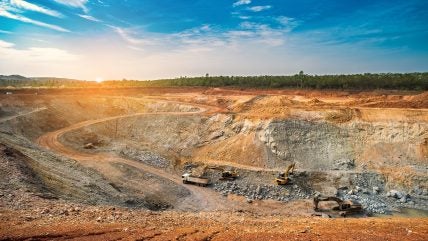Sign up for daily news updates from CleanTechnica on email. Or follow us on Google News!
As promised, the Biden administration is moving full steam ahead with its plan to establish a network of hydrogen hubs in the US, with the Energy Department carving up a $7 billion pot of funding for the effort through a provision of the Bipartisan Infrastructure Law. As the plans took shape last year, it seemed that green hydrogen would grab the lion’s share of funding. However, the law also requires a seat at the table for fossil energy stakeholders, so let’s see how that panned out.
Green Hydrogen: So Much Winning!
The new Regional Clean Hydrogen Hubs program launched in 2022 as an $8 billion program. If you know what happened to the other $1 billion, drop us a note in the comment thread.
Meanwhile, this morning the Energy Department announced the seven winning hubs, and the fallout is pretty much what you’d expect.
The big winner is the biggest sub-national economy in the world, and one of the biggest single markets for cars and other vehicles in the world.
If you guessed California, run right out and buy yourself a cigar. If California was its own economy, it would still rank 4th or maybe 5th among all the nations of the world, depending on who’s counting.
The Energy Department awarded the California Hydrogen Hub (aka the Alliance for Renewable Clean Hydrogen Energy Systems or ARCHES) up to $1.2 billion to produce green hydrogen from renewable energy, primarily meaning water electrolysis. Systems that draw hydrogen from biomass also qualify under the award.
That’s it. Just green hydrogen from water, and renewable hydrogen from biomass. No natural gas, coal, industrial waste, or anything else involving fossil energy.
California has long been a pace-setter for regulation and innovation aimed at cleaning up automotive emissions in the US, and the Energy Department expects ARCHES to leverage that status for nationwide impact.
“The California Hydrogen Hub will leverage the Golden State’s leadership in clean energy technology to produce hydrogen exclusively from renewable energy and biomass. It will provide a blueprint for decarbonizing public transportation, heavy duty trucking, and port operations — key emissions drivers in the state and sources of air pollution that are among the hardest to decarbonize,” the Energy Department enthused.
A Green Hydrogen Hub For The Mid-Atlantic Coast
With a similar plan, the Mid-Atlantic Hydrogen Hub (aka Mid-Atlantic Clean Hydrogen Hub or MACH2) of Pennsylvania, Delaware, and New Jersey won up to $750 million in support of green hydrogen production. Repurposing existing fossil energy infrastructure and rights-of-way is also a featured part of the plan.
The region’s nuclear facilities will also come into play for water electrolysis. Depending on who’s talking, that doesn’t necessarily come under the “green” category, though it does leverage a zero emission resource. Green or not, the region has a head start on water electrolysis through the Nine-Mile Point Nuclear Power Station in New York, which is already hosting a water electrolysis demonstration facility.
If you’re wondering why Delaware, that’s a good question. The University of Delaware recently won a $10 million Defense Department grant to ramp up its clean hydrogen and fuel cell R&D programs, so that may have factored in.
Another Win For Green Hydrogen
Green hydrogen also notched a significant victory in the Pacific Northwest, where the Pacific Northwest Hydrogen Hub (aka PNW H2) of Washington, Oregon, and Montana won up to $1 billion to “leverage the region’s abundant renewable resources to produce clean hydrogen exclusively via electrolysis.”
“It’s anticipated widescale use of electrolyzers will play a key role in driving down electrolyzer costs, making the technology more accessible to other producers, and reducing the cost of hydrogen production,” the Energy Department explained, so look for green hydrogen stakeholders in other states to benefit from the PNW H2 model.
Montana…interesting! if you have any thoughts about Montana, drop us a note in the comment thread.
Not-Green Hydrogen: Meh
The other winning hubs are a mixed bag. Some of them are going to face some serious headwinds as the climate crisis shifts into high gear, local communities push back against new fossil energy infrastructure, and manufacturing stakeholders seek to cull fossil sources out of their supply chains.
Nevertheless, the law is the law, and the Bipartisan Infrastructure Law does stipulate a carve-out for natural gas.
Natural gas stakeholders in the Appalachian Hydrogen Hub (aka Appalachian Regional Clean Hydrogen Hub or ARCH2 of West Virginia, Ohio, and Pennsylvania drew the winning number. Their award of $925 million will help pound another nail into the coffin of the region’s coal industry, and replace coal jobs with new jobs in the natural gas industry.
Good luck with that. The Appalachian coal industry was already on shaky ground in the early 2000s when shale gas was discovered in the region, subjecting residents to a new wave of environmental, public health, and quality of life impacts. Now here comes ARCH2 to help ensure that local communities are tied to the drill-and-extract fossil energy model far into the future.
The plans include new pipelines and carbon sequestration facilities, which could soon be rendered obsolete by new carbon-control innovations. Just saying.
In addition, the new energy infrastructure proposed under the plan could run afoul of the Biden administration’s environmental justice goals.
“The Administration continues to work in partnership with frontline communities and industries to build a clean energy economy that is equitable and responsive to many of the concerns raised by Environmental Justice communities,” the Energy Department explains, which is not a particularly encouraging sign.
In contrast, the nearby states of Illinois, Indiana, and Michigan joined forces to collaborate on the Midwest Hydrogen Hub (aka Midwest Alliance for Clean Hydrogen or MachH2), nailing an award of up to $1 billion for a more diversified approach aimed at decarbonizing hard-to-decarbonize industries including steel and glassmaking, power generation, refining, aviation fuels, and heavy-duty trucking.
The region’s natural gas resources are in the mix, but the plan also leans heavily on green hydrogen from renewable resources.
As with the Mid-Atlantic hub, the Mach H2 plan also deploys the region’s existing nuclear energy resources for water electrolysis. The same Energy Department program behind the Nine Mile project in New York is also supporting a similar water electrolysis demonstration system at the Davis-Besse Nuclear Power Station in Ohio.
Regional Resources In Play
Overall, the Hydrogen Hubs program aims to take advantage of regional resources to help boost local economic development. That factor is evident in the Heartland Hydrogen Hub composed of Minnesota, North Dakota, and South Dakota, which won $925 million to help decarbonize the region’s agriculture industry.
Stay tuned for more details on that. North Dakota is an interesting case because it is among the top 10 ethanol producers in the US, and it also the nation’s fifth-largest coal producing state as of 2022.
However, the state’s growing wind power profile has caught the eye of green hydrogen stakeholders, and it seems that the Energy Department is eyeballing the connection between green hydrogen and green ammonia to stimulate a low carbon, home-grown ammonia fertilizer industry in the state.
There Goes Texas, Again
Texas holds a unique position in the energy landscape of the US. Despite its deep red politics and powerful stake in the fossil energy economy, Texas has also been a leader in wind and solar capacity, as well as a hotbed for other energy innovations, including green hydrogen.
Accordingly, instead of hooking up with other states to apply for Energy Department funding, Texas went solo. The bet paid off. The state’s Gulf Coast Hydrogen Hub (aka HyVelocity H2Hub), which is an exclusively Texas organization, won up to $1.2 billion for a plan to scale up hydrogen production using both water electrolysis and natural gas with carbon capture.
Hmmm…what did ExxonMobil know and when did they know it? On October 11 the company announced its intention to purchase Pioneer Natural Resources for $59.5 billion. The move will more than double ExxonMobil’s footprint in Texas’s lucrative Permian Basin shale play, according to S&P Global. Sure looks like someone is expecting to make bank on that new Texas hydrogen hub, at least as far as fossil-sourced hydrogen goes.
Where’s Congress?
Of course, no mention of the Bipartisan Infrastructure Law is complete without a mention of Republican leadership in Congress, or lack thereof.
On October 4, House Republicans kicked Representative Kevin McCarthy of California out of the all-important position of Speaker. As of this writing no replacement is in sight, and nothing can get done until somebody occupies that chair.
Meanwhile over in the Senate, Republican Tommy Tuberville of Alabama is single-handedly holding up hundreds of military promotions while his Republican colleagues Rand Paul (Kentucky), JD Vance (Ohio), and Ted Cruz (Texas) have done the same to key State Department diplomatic positions, including Israel and other countries in the Middle East.
So much for the party of American Exceptionalism. If you have any thoughts about that, drop us a note in the comment thread.
Image: Hydrogen courtesy of US Department of Energy (cropped).
Follow me @tinamcasey on Bluesky, Threads, Post, LinkedIn, and Spoutible.
Have a tip for CleanTechnica? Want to advertise? Want to suggest a guest for our CleanTech Talk podcast? Contact us here.
EV Obsession Daily!
I don’t like paywalls. You don’t like paywalls. Who likes paywalls? Here at CleanTechnica, we implemented a limited paywall for a while, but it always felt wrong — and it was always tough to decide what we should put behind there. In theory, your most exclusive and best content goes behind a paywall. But then fewer people read it!! So, we’ve decided to completely nix paywalls here at CleanTechnica. But…
Thank you!
Tesla Sales in 2023, 2024, and 2030
CleanTechnica uses affiliate links. See our policy here.





